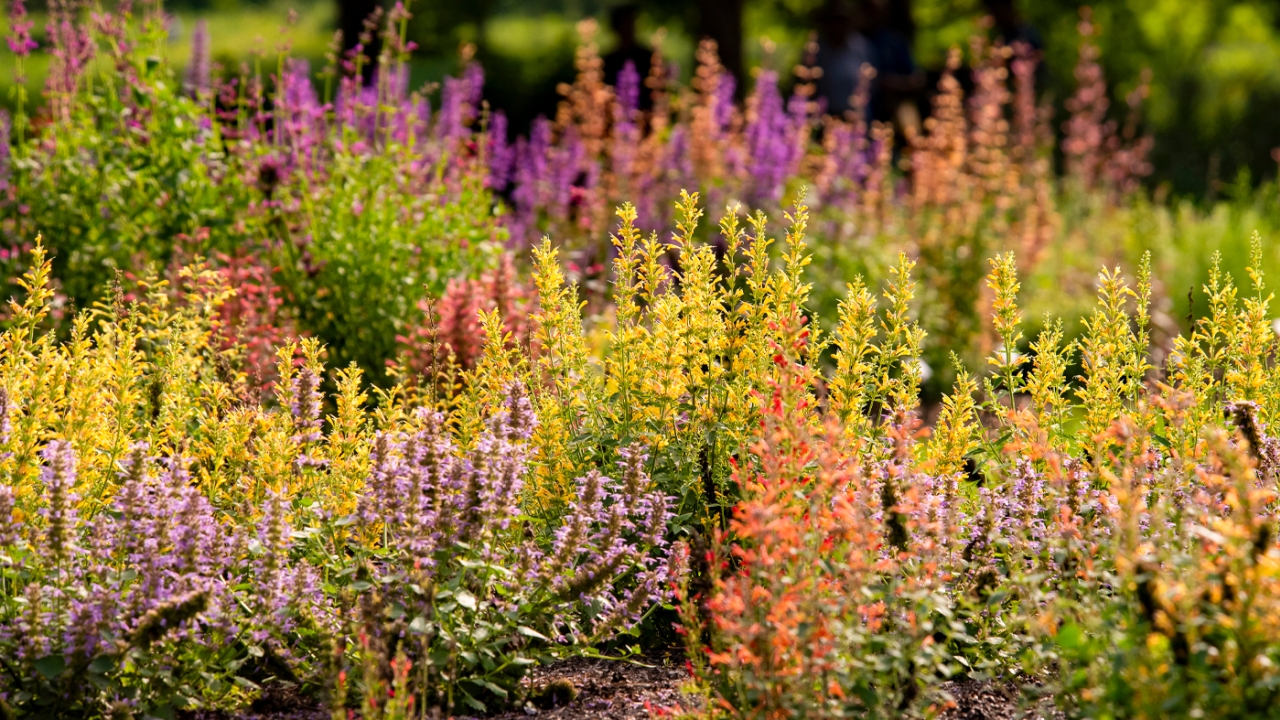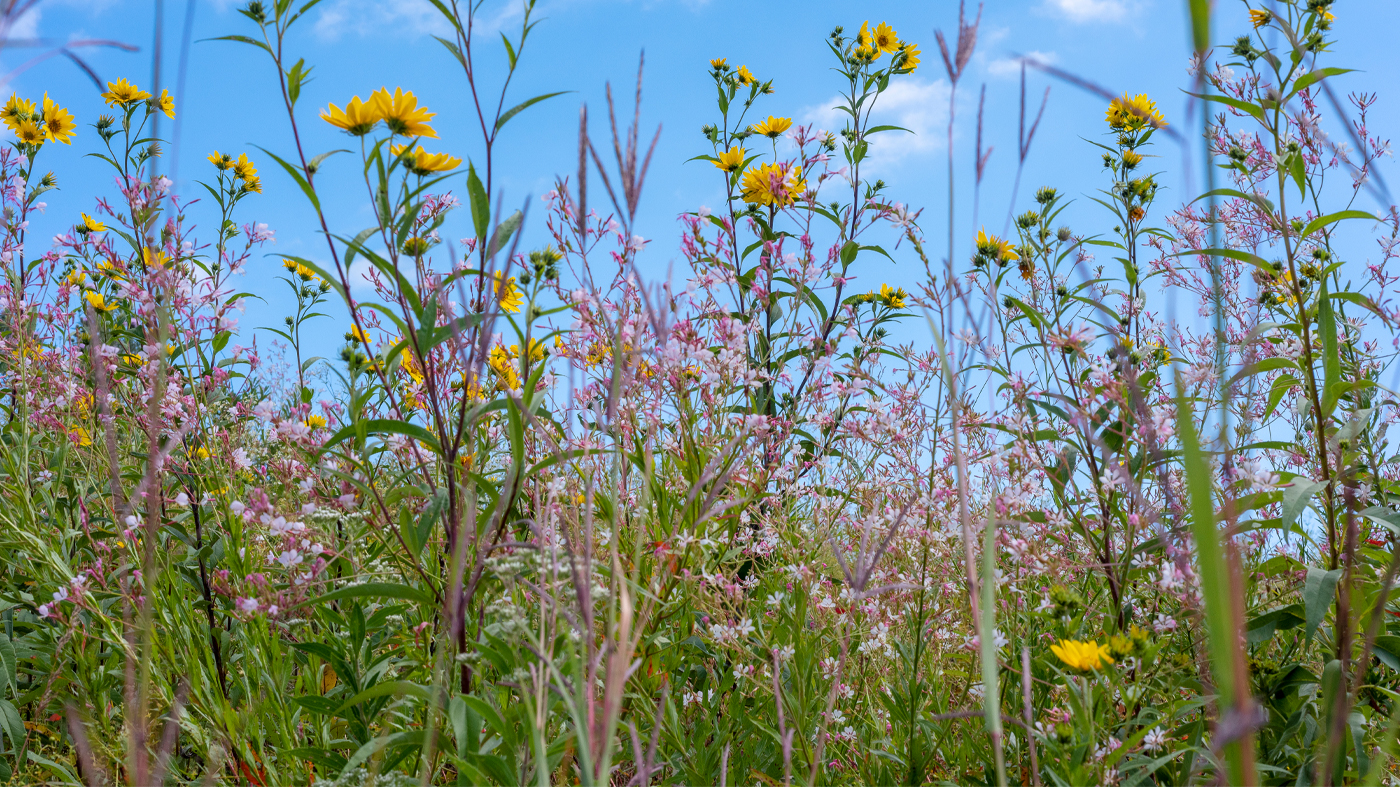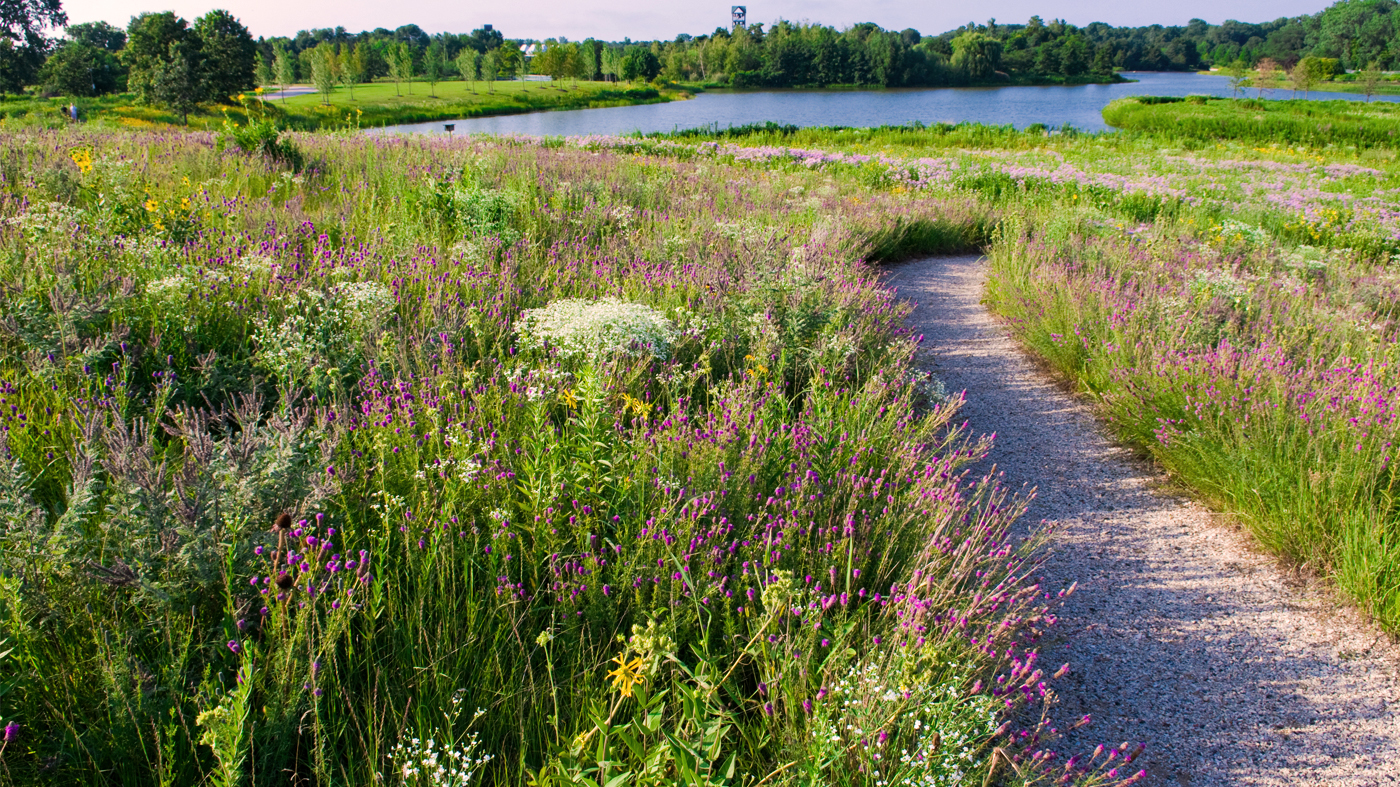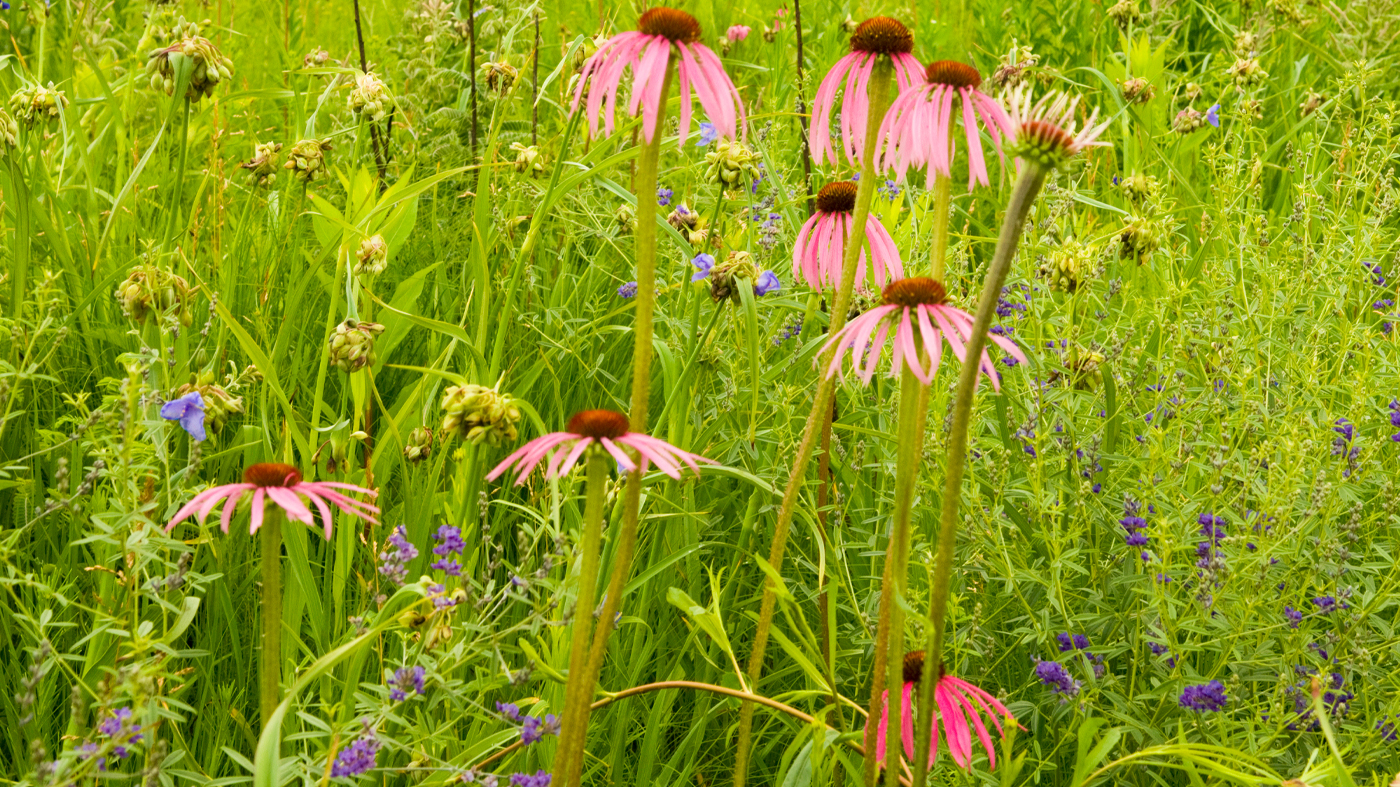

Conservation
The Mating Scene for Prairie Plants

The Prairie State is…not so much!
Illinois is known as “the prairie state,” but this moniker no longer truly reflects the landscape. Urban and agricultural development has left us with less than one-tenth of one percent of prairieland. Years ago, the prairie stretched from horizon to horizon. Today, it can be found only in small patches. Since several species of plants and animals rely on the prairie for survival, as this ecosystem disappears, so will they. Chicago Botanic Garden scientists studying reproductive biology are working hard to understand how populations can be reestablished.
Scientists have taken two different approaches to try to solve the problem of diminishing prairie plant populations. One approach investigates the landscapes themselves, determining which environmental factors help or harm plant reproduction and vitality. The scientists evaluate how fire (or the lack of it) impacts prairie reproduction, and the role of plant pollinators and invasives. Another methodology assesses genetic issues like the loss of genetic diversity, problems with inbreeding, and so on. Garden scientists are pursuing both approaches to maximize our knowledge and solutions.

Playing the Game
So, how does prairie plant reproduction happen? Three key environmental conditions must go well for prairie plants to enjoy robust reproduction: location, timing, and compatibility.
Location.
The plants must be at the right place at the right time with a good potential match waiting in the wings. Bees and wind carry pollen from one plant to another, but they can only travel so far; when the prairie enjoyed continuous sweeps of plants, location was not a problem, but now so much prairie is lost that the distance between patches has increased and successful pollination has declined. Like human relationships, the more potential partners available in a given location, the better the chances for a good match! Success hinges upon numbers and proximity. For example, it is easier to meet a special someone at a singles’ matchmaking event than at a remote campsite.
Timing.
Timing is essential with prairie plant reproduction. They must flower at the same time to reproduce. If a plant blooms a week early or a week late, it loses its potential for partnerships. You snooze, you lose.
Compatibility.
Like people, plants must be compatible. In the plant world, that means a diverse gene pool must exist to ensure healthy progeny. As the prairie disappears, genetic diversity suffers, and plants become incompatible with one another. But scientists are seeing some promise.

Improving the Chances
What can be done to improve the chances of successful prairie plant reproduction? Garden scientists are addressing the issues of location, timing, and compatibility. With a focus on Echinacea, a native prairie plant, Stuart Wagenius, Ph.D., and his research team have found a few “matchmaking” successes, including rekindling old prairie flames in an attempt to counteract problems of distance, timing, and genetics.
Distance
Dr. Wagenius has found more plants flowering in a previously burned area—patches of flowering plants are denser and more potential mates are available nearby.
Timing
Findings suggest that spring burns may help synchronize the timing of flowering during the following summer.
Compatibility
When more plants are flowering, we find more genetic diversity among potential mates, and the likelihood of finding compatible mates nearby increases.

